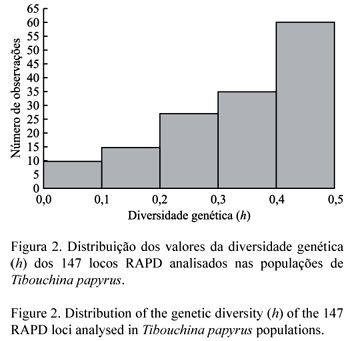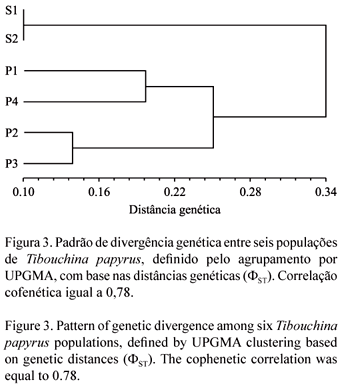This paper has the aim of using RAPD markers to describe the genetic of variability of Tibouchina papyrus (Pohl) Toledo local populations, from the regions of Serra Dourada and Serra de Pirineus, in Goiás State, Central Brazil. The six RAPD primers generated a total of 147 loci, varying from 23 to 26 per primer. The hierarchical evaluation of genetic variability, performed using an Analysis of Molecular Variance (AMOVA) considering the local populations within the two regions (i.e., Serra Dourada and Serra de Pirineus), showed an estimate of overall diversity among populations equal to F ST = 0.3439. The value of divergence between regions (F CT) was equal to 18.96% so that the variation among local populations within regions was equal to 15.43%. Estimates of gene flow suggest a small number of migrants among local populations per generation. Multivariate analyses (UPGMA and NMDS) indicated that a relationship between genetic and geographical distances exists, which was confirmed by a spatial pattern analysis using Mantel test (r = 0.71; P < 0.015 with 1000 random permutations). Thus, this structure was originated from a stochastic neutral model of population differentiation, in which drift within populations is counteracted by short distance gene flow. Despite strong levels of population structure (i.e., high divergence among populations within regions), the diversity observed support the hypothesis that T. papyrus is a facultative xenogamous species. The lack of high levels of homozigosity indicates that ecological mechanisms related to species' reproductive biology prevent, someway, a high level of endogamy within local structured populations, which could cause deleterious effects in a long run.
cerrado; genetic variability; RAPD; Tibouchina papyrus

















